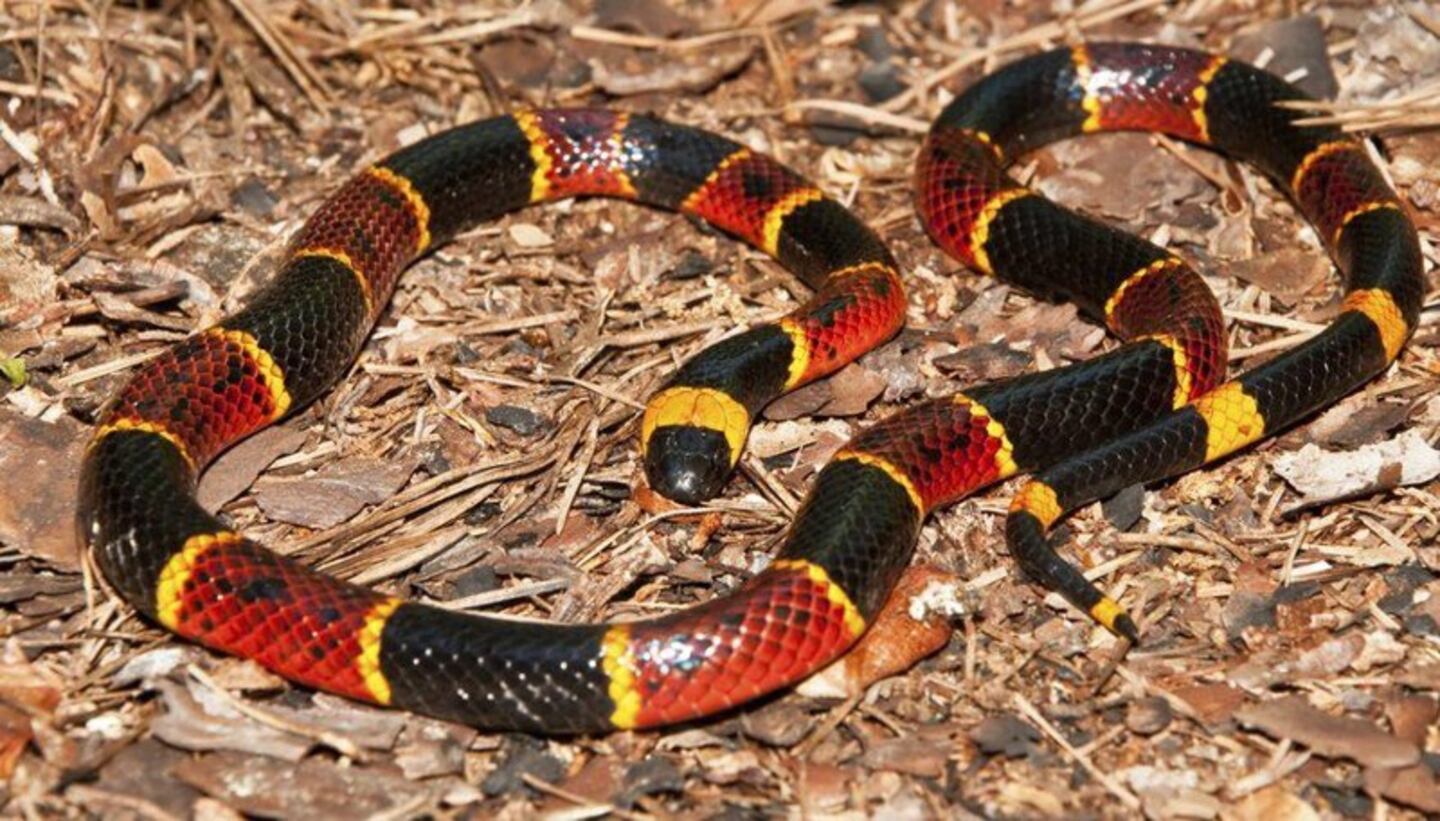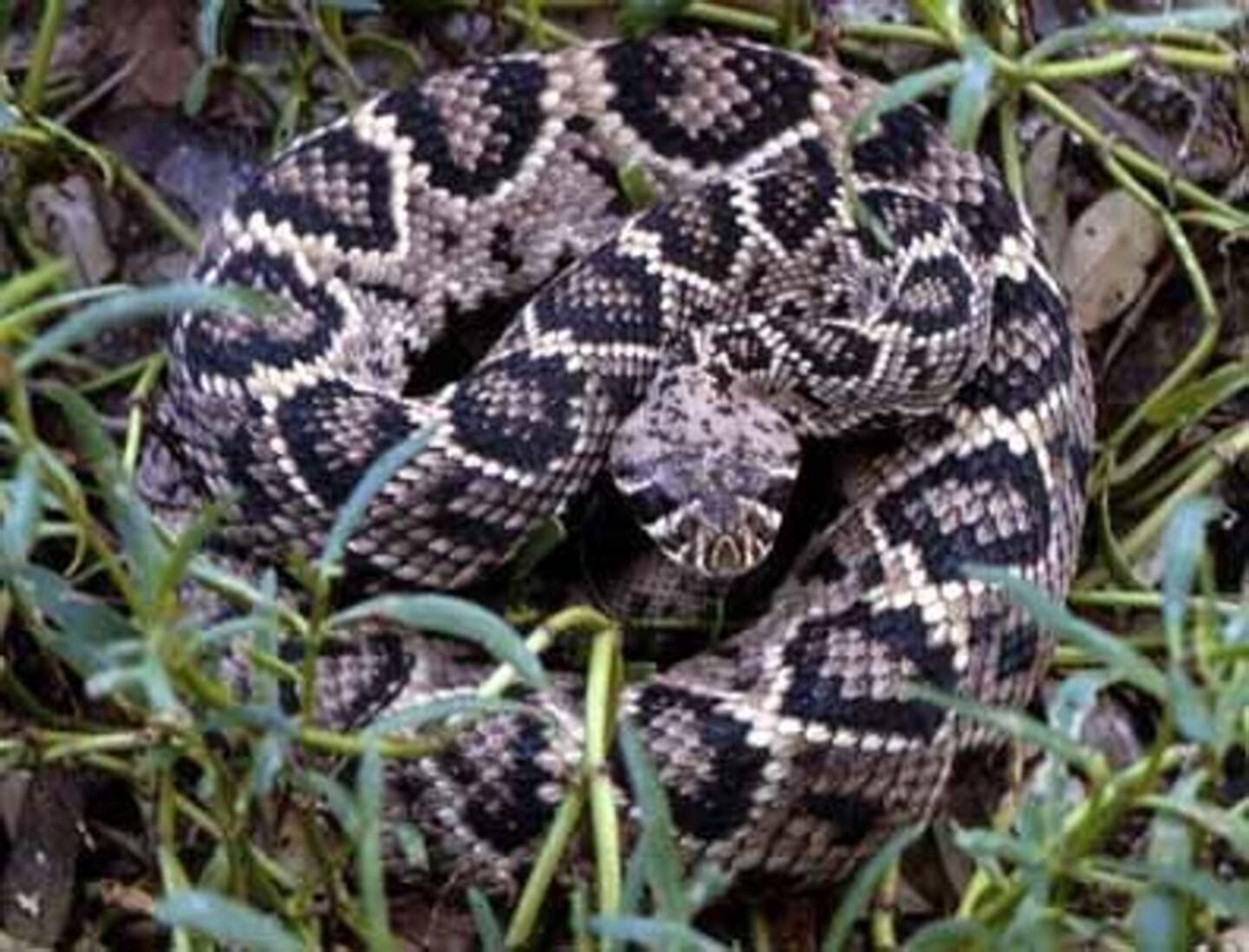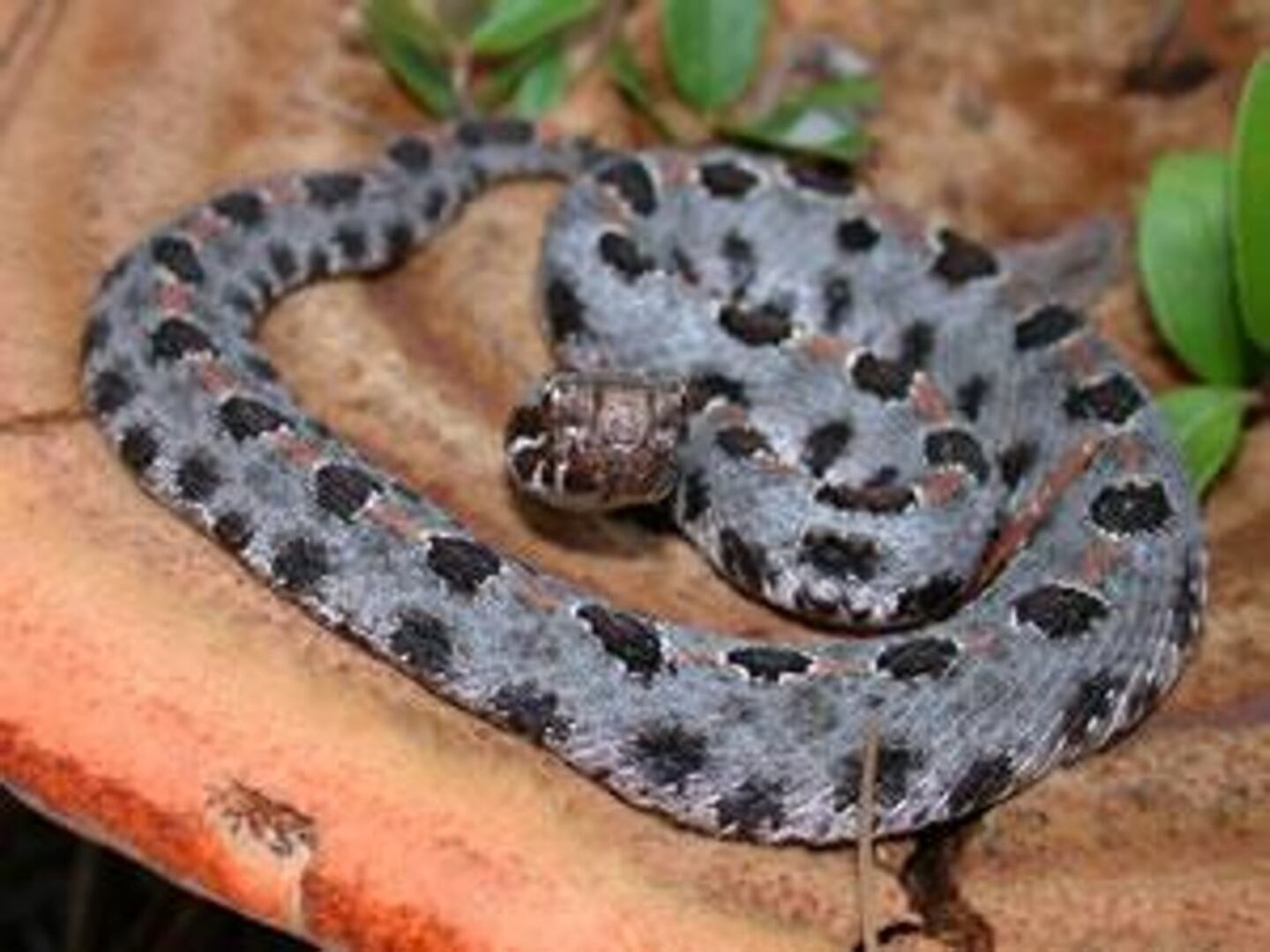As important of a role snakes play in Georgia’s ecosystem, some venomous species in the state pose a serious threat to human life.
» RELATED: 7 most common myths about snakes
But according to the Georgia Department of Natural Resources' wildlife division, of the 46 snake species known in the state, six are actually venomous. And of those six, experts say snakebites from only three — the timber rattlesnake, Eastern diamondback and cottonmouth — are realistically threatening.
Here’s what you need to know about the six venomous snakes in Georgia:
Water moccasin (or cottonmouth)
According to the UGA Savannah River Ecology Laboratory Herpetology Program, these snakes are semi-aquatic (found on both land and in water), have triangular heads, are heavy-bodied, vary in coloration and have large jowls.
» RELATED: It's the season for snakes: When should you worry?
Water moccasins/cottonmouths (Agkistrodon piscivoruscan) can be active day or night, but typically feed in the dark when it's hot. Their range is the entire Southeast, but in Georgia, they're typically found in the southern Coastal Plain area. That doesn't mean you won't come across them in metro Atlanta, though.
The species can be found in nearly all freshwater habitats but are most common in cypress swamps, river floodplains and heavily-vegetated wetlands.
Other water snakes, such as the Nerodia spp., are often mistaken for water moccasins and killed. According to Georgia's Wildlife Resources Division, the unnecessary killing of non-venomous snakes is illegal in Georgia. You can learn about the differences between the two species at georgiawildlife.com.
» RELATED: Snakes are most attracted to these kinds of Atlanta homes
Copperhead
The copperhead (Agkistrodon contortrix) is much more common in the metro Atlanta area compared to the others on this list. They're fairly big, heavy-bodied snakes with large triangular heads, tan/brown bodies showing dark hourglass-like crossbands along their length. An average adult copperhead grows to 24 to 40 inches.
The snakes range throughout the eastern and central U.S. and can be found in a wide variety of habitats, proving as comfortable in dry, rocky areas as they are in cool, forested areas or wetlands. Populations also often persist in suburban neighborhoods with patches of forest.
Copperheads are responsible for the majority of snakebites in the Southeast each year.
» RELATED: Here are tips on keeping a snake-free yard
Canebrake/timber rattlesnake
The canebrake or timber rattlesnake (Crotalus horridus) is a big, heavy-bodied snake that can grow to 6 feet in length. Canebrakes are usually gray, may have a pink hue and may have a pink, yellow, orange or brown stripe running along its back.
Timber rattlers, according to the UGA Savannah River Ecology Laboratory Herpetology Program, "are typically more brown or yellowish and may even be black. Both forms have solid black tails that appear almost velvet and black chevrons on the back and sides with the point of the (V) pointing forward."
» RELATED: Largest venomous snake in U.S. spotted swimming in waters off Florida Keys
These snakes are found widely in the eastern U.S. but are mostly absent from Florida. UGA experts described their habitats as “lowland cane thickets, high areas around swamps and river floodplains, hardwood and pine forests, mountainous areas, and rural habitats in farming areas. They typically become reduced in numbers in highly urbanized or areas of housing development.”
Active both day and night, they hibernate during cold weather but become active in late spring and can remain so until late fall.
Timber Rattlesnakes, according to Georgia's Wildlife Resources Division, appear to have declined in recent years due to hunting in the mountains.
Eastern coral snake
The Eastern coral snake (Micrurus fulvius) is highly venomous, its venom potentially causing death. They are slender, mid-sized snakes with a smooth appearance and notable bright red, yellow and black rings.
According to UGA, “the eastern coral snake is found in scattered localities in the southern Coastal Plain from North Carolina to Louisiana, including all of Florida, where they are most prevalent.” Although rarely seen in their habitats, they are most often encountered in spring and fall. Coral snakes are not in any way limited to rural areas. “Perhaps because of their secretive habits, coral snakes often persist in suburban areas,” UGA noted.
» RELATED: How to protect your pet from snakebites
These snakes are often mistaken for the non-venomous scarlet kingsnake, which has a similar color pattern but with a red snout and light-colored rings separating the red ones by black. Eastern coral snakes, on the other hand, have red rings separated by narrow yellow rings. Here's a rhyme to help distinguish between the two, according to Georgia Wildlife: "Red touch yellow, deadly fellow; red touch black, venom lack."
Eastern diamondback rattlesnake
According to UGA, the Eastern diamondback rattlesnake (Crotalus adamanteus) is the largest of all known rattlesnake species.
These rare snakes have “large, heavy [bodies] with large, broad heads with two light lines on the face. The background color is brown, tan, or yellowish and covered with the namesake diamonds, which are brown and surrounded by lighter scales.” They can reach seven feet in length but typically measure 3-5 feet in total length.
» RELATED: How Atlantans can identify venomous snakes this summer
The Eastern diamondback rattlesnakes are typically found in the Lower Coastal Plain in the Southeast from North Carolina to Louisiana, but are most prevalent in south Georgia and Florida. “This species usually inhabits dry sandy areas, palmetto or wiregrass flatwoods, pinewoods, coastal dune habitats, or hardwood hammocks,” UGA noted, adding that “they generally avoid wet areas but sometimes live along the edges of swamps. They are accomplished swimmers and even travel through saltwater to and from barrier islands.”
Eastern Diamondback rattlers are active during the day, mostly mornings and evenings in summer. They generally hibernate during the winter.
Pigmy rattlesnake
The pigmy rattlesnake is small and has a tiny rattle. UGA noted that these snakes “have a row of mid-dorsal spots and a bar than runs from the eye to the base of the mouth, but the color of this bar can vary from black to brownish red. An orange or reddish brown dorsal stripe is also present” in the two subspecies found in Georgia.
The species have reached a maximum length of 31 inches, but pigmy rattlesnakes are typically 16-23 inches long.
Additionally, “the Carolina pigmy rattler can be gray, tan, or lavender. Some specimens from northern Georgia and eastern North Carolina are orange or red,” UGA said. They’re found in northeast, northwest and central Georgia and throughout South Carolina. Pigmy rattlers live in a variety of habitats, both wet and dry, including creeks, swamps, mixed forests and even sandhills. They mostly hide “in leaf litter and can be hard to spot,” according to UGA. They are active throughout the day.
Cox Media Group










